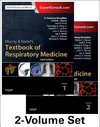
-
 Anglický jazyk
Anglický jazyk
Relationship between work capacity and absenteeism
Autor: Radhia Toumi
The garment industry is a high-risk sector for developing MSDs and influences work capacity. The aim is to determine the profile of female workers who have had sick leave, to identify the main causes of absenteeism and to assess work capacity. This is a... Viac o knihe
Na objednávku, dodanie 2-4 týždne
24.93 €
bežná cena: 27.70 €
O knihe
The garment industry is a high-risk sector for developing MSDs and influences work capacity. The aim is to determine the profile of female workers who have had sick leave, to identify the main causes of absenteeism and to assess work capacity. This is a cross-sectional questionnaire study of female garment workers in the Monastir Tunisia region who have been absent for a period of 15 days during 2017 and 2018. = = The evaluation of work capacity is carried out using the WAI score. Results: The prevalence of absent employees is 8.1%. The average age of female workers is 35.2 ± 7.2 years. The majority of employees have more than 10 years' seniority (70.5%). The average WAI score is 35.8% ± 4.9. 91.4% of those absent have an average work capacity. Poor working capacity concerned the oldest (p=0.17), oldest (p=0.04) and longest absentees (p=0.39). Conclusion: The implementation of a prevention approach must focus on raising awareness among all the players in the company and improving safety.
- Vydavateľstvo: Our Knowledge Publishing
- Rok vydania: 2020
- Formát: Paperback
- Rozmer: 220 x 150 mm
- Jazyk: Anglický jazyk
- ISBN: 9786202989336












